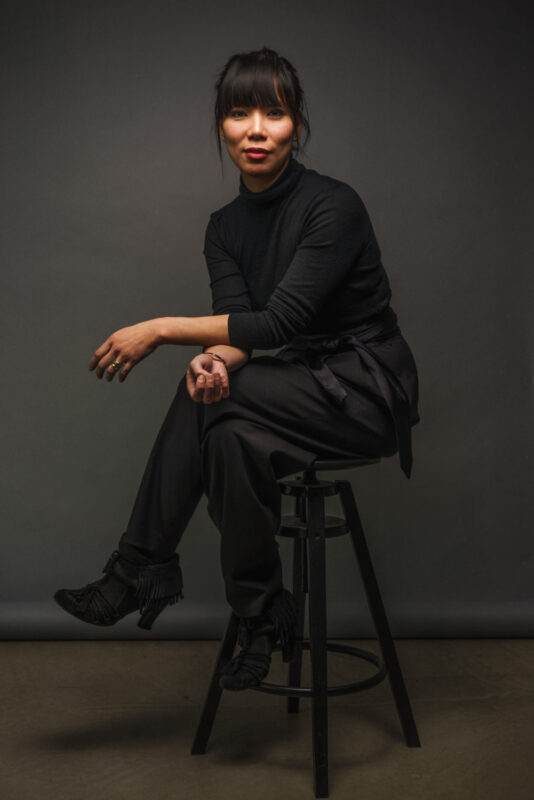How to design an extraordinary shopping experience in Covid 19 era
Retailers recognize that COVID-19 have had a significant impact on their business, that´s why I interviewed Queenie Lo, to discuss how to design an extraordinary shopping experience in this era. She is the CEO at UXUS, an (Global retail design brand agency) end-to-end consultancy that offers comprehensive design services encompassing the entire customer journey, including retail design, hospitality design, experience retail design, UX digital services, financial analytics, and proof of concept metrics. For over 15 years, UXUS has transformed the world’s top brands by elevating brand perception and increasing customer engagement through our awe-inspiring environments and experiences.
You have a bachelor’s degree in Fashion Technology and have studied at the University of Amsterdam and London College of Fashion. You have worked with some of the world’s most popular and known brands such as McDonald’s, Shell, Proctor and Gamble, InterContinental Hotels Group, Adidas, Sephora, L’Occitane, among others, what lessons have you learned over the years having a job in such important enterprises?
Collaboration with clients is key, we ensure our clients are included and have a proactive role within each project briefing/brand immersion and throughout the entire design process. It is essential in our design process to encourage co-creation. Their understanding and insights of the brand and customer's point of view acts as a foundation for us to develop the customer journey and design a space that connects with their audience in the best ways possible. The biggest compliment for us, is when clients feel we are an extension of their design team. This is the essence of working for an agency like UXUS – internally and externally we are multidisciplinary individuals that work collaboratively and our clients value this. ´
You are CEO at UXUS, a Global retail design brand agency, can you tell us what services provide and to who is addressed?
Essentially, we bring brands to life in a spatial environment, from retail to hospitality. Our core services are interior and architecture with a key focus on experience design, connecting on and offline worlds in a physical space. Although we are based in Amsterdam, 90% of our projects take place outside the Netherlands. We are very fortunate to work with a global client portfolio. Today the physical environment is a very powerful tool for a brand to express itself. Where online purchases are transactional, the expectations from consumers of shopping in-store are extremely high and is a very emotive experience. We go into details of creating service rituals and staff manuals. A store nowadays is so much more than products and fixtures. We help brands create highly transformative store experiences that build an emotional connection with its consumers and translates into enhanced commercial outcomes.
Talking about customer experience, it has changed a lot since Covid 19, what differences can you remark now in pandemic times?
As we are slowly moving out of the pandemic, people continue to be excited about going back to physical stores, bars, restaurants, and travel. High streets are busy, and brands are re-strategizing their retail presence. You see the rise of brands pushing for pop-up experiences to entice consumers back to the stores but also the need of integrating digital touchpoints. People had to purchase online for almost two years so this is still an important aspect of customer experience, however, brand loyalty is what drives people back to the stores. It is important to celebrate the brand and to ensure there's fluidity between digital and physical.
It is said the importance of the shopping experience to impress purchasers and ensure that customers will keep doing business with us in the future, what tips can you give about it to a small business that have a tight budget?
It’s about looking at trends in the market and staying true to what these trends mean to you. It doesn't have to be about a large budget or following each design trend. During the pandemic businesses, small and big, took opportunities to use empty buildings and be creative with lower budgets to still create engaging store experience. Physical representation and versatility are vital to the shopping experience and by doing this right you will ensure customers will keep coming back.
It is a fact that e-commerce has grown a lot worldwide since the pandemic, some experts point out that physical stores will eventually disappear, and others say that stores will be centers of experiences but not for shopping, what do you think?
A mixture of the digital and physical aspects is super important, brands will constantly change to find new ways to express themselves. Consumers crave human interaction, especially following the pandemic which is why having a physical representation is vital. Having a presence online is just as important, especially with the development of the metaverse and brands creating a space for themselves in this world. There is a whole new shift to the way people shop and stores need to keep up with these changes to stay relevant.
What else do you want to share with us?
We consider strategic design and implement D&EI at every level as a part of the whole process, looking at the bigger picture assessing how things will not only impact their external audience but their internal one. At UXUS we work with clients either through our inhouse design team or in collaboration with their own teams to ensure DE&I is included and considered in every touch point, as for any sector diversity and inclusion has to be a part of your design process. The way brands communicate themselves both in store and online is fundamental to their success, consumers have changed the way they shop, and it affects how brands cater towards this shift. We want to help brands communicate who they are and what they want to be by expressing their brand story to ensure there is fluidity both in store, online, and throughout the customer journey.

